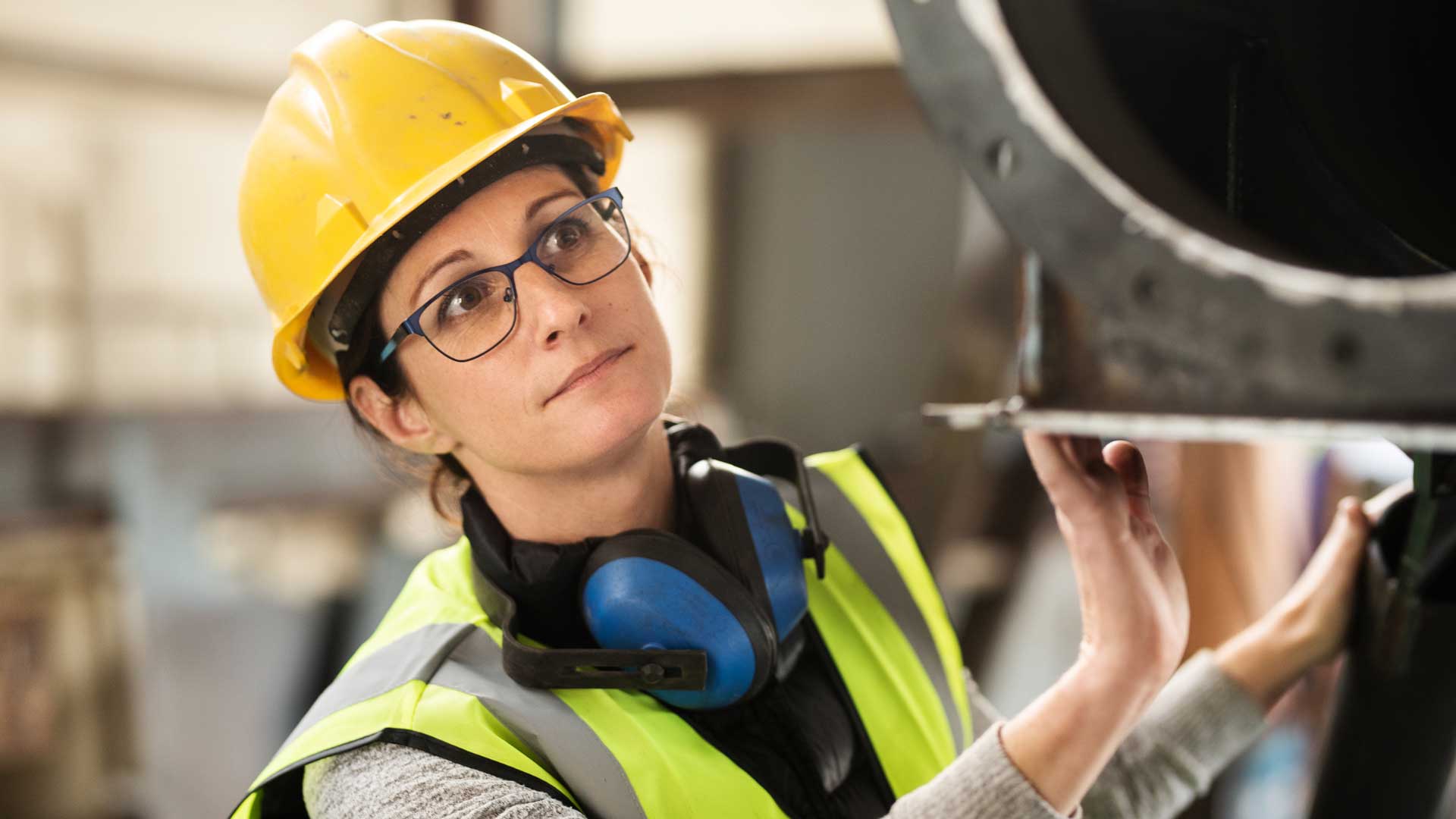How an Ergonomic Workplace Can Help Reduce Injuries and Boost Productivity
An ergonomic workplace is the cornerstone of a safe, efficient, and profitable environment. Proper workstation design and equipment selection not only minimize injuries but also elevate employee morale. When you reduce physical strain, you naturally unlock higher productivity and lower turnover rates.
At Ergotronix, we’ve helped countless businesses realize these benefits through well-planned ergonomic strategies. Learn more about how to craft an ergonomic workplace below. Then, contact us for professional guidance in improving the ergonomics of your business.
The Link Between Ergonomic Workplace Design and Injury Prevention
A well-designed workspace addresses the specific movements employees perform every day. By aligning tasks with the body’s natural posture, repetitive stress is reduced, and energy expenditure is optimized. This alignment is particularly critical in manufacturing, where lifting, bending, and repetitive motions are common. An ergonomic workplace that caters to these tasks helps prevent musculoskeletal disorders and fosters a proactive safety culture.
Why Poor Ergonomics Lead to Common Workplace Injuries
Poor workplace design often forces employees to adopt unnatural positions or repetitive movements. These imbalances build up over time, creating chronic issues that are easily overlooked until they become serious. A few common workplace injuries that can be alleviated by improved ergonomics include:
- Back Strain: Workers may regularly bend or lift in awkward ways. Long-term, this can lead to persistent back pain and spinal issues.
- Carpal Tunnel Syndrome: Repetitive tasks like typing or assembling parts strain the wrists. Neglecting proper wrist support elevates the risk of nerve compression.
- Neck and Shoulder Tension: Constantly looking down or holding equipment overhead can tighten muscles. Over time, these small stresses compound into chronic discomfort.
- Tendinitis: Overuse of specific muscle groups leads to inflammation of the tendons. Without intervention, this pain becomes disruptive to daily tasks.
- Fatigue-Related Injuries: Standing or sitting for long periods without breaks strains muscles. Fatigue can increase slip-ups, potentially resulting in accidents or injuries.
Addressing these issues starts with an ergonomic workplace that accounts for each repetitive motion or posture. By rethinking workstation design, employers create safer environments that reduce strain on workers’ bodies.
The Cost of Ignoring Ergonomic Workplace Best Practices
Neglecting ergonomics not only harms employee well-being but also affects a company’s bottom line. Hidden expenses can accumulate quickly, undermining profits and future growth.
- Medical Expenses: Injuries lead to doctor visits, physical therapy, and medication costs. These bills can mount rapidly if multiple employees are affected.
- Decreased Productivity: Workers operating in pain tend to move slower and make more mistakes. This slump in efficiency ripples through your entire operation.
- Increased Turnover: Employees plagued by discomfort may seek employment elsewhere. Constantly hiring and training new staff is both costly and disruptive.
- Legal Liabilities: Severe or repeated injuries can lead to regulatory fines and lawsuits. These legal battles often drain a company’s resources and reputation.
- Equipment Damage: Improper handling due to poor ergonomics can wear machinery faster. Frequent repairs or replacements become an added financial burden.
Any one of these factors can weigh heavily on a company’s finances. When combined, they can pose a severe threat to long-term stability and growth.
Identifying High-Risk Areas in the Workplace
Locating danger zones is the first step toward remedying them. Often, high-risk areas include assembly lines, packaging stations, or shipping departments where repetitive motions and lifting are common. By systematically assessing tasks, tools, and employee feedback, you can pinpoint where ergonomic improvements are most urgently needed.
Repetitive Motion Tasks and Overexertion Risks
In manufacturing, repetitive tasks often involve performing the same movement hundreds of times a day. Overexertion frequently arises when these tasks aren’t aligned with an ergonomic workplace setup.
By introducing tools or work practices that balance force and motion, employers can reduce strain on workers. For instance, using reliable work positioners or rotating job assignments breaks the cycle of repeated stress on a single muscle group. Employees benefit from varied workloads, and the risk of musculoskeletal injuries drops significantly. Over time, these proactive measures create a healthier environment that boosts productivity and morale.
Workstations That Contribute to Poor Posture
Whether you’re in an office or on the factory floor, a poorly arranged workstation can wreak havoc on posture. Chairs set too high or too low, desks angled awkwardly, and tools placed far from reach force employees into uncomfortable positions.
Common symptoms of postural problems include neck stiffness, shoulder tension, and lower back pain. An ergonomic workplace addresses these pain points by matching chairs, desks, and tool placement to employees’ physical dimensions. Telescopic lift systems can also help alleviate this issue.
How Ergonomic Workplace Equipment Improves Safety
Ergonomic equipment transforms static, injury-prone tasks into smoother, safer processes. Adjustable furniture, anti-fatigue mats, and compact lift transporters are just a few examples of tools that can drastically cut down repetitive strain. When employees have equipment that adapts to their needs, they’re less likely to force their bodies into harmful positions.
Work Positioners for Reducing Strain and Repetitive Movements
Work positioners are a must in any ergonomic workplace. By elevating and tilting workpieces, they reduce the need for employees to bend or stretch repeatedly. This design helps distribute loads more evenly, mitigating the risk of back, neck, and shoulder injuries.
As workers handle components at comfortable angles, they can complete tasks more quickly and with fewer errors. Improved accessibility also leads to better quality control, as each piece is within optimal view. Over time, this balanced approach to material handling boosts both productivity and morale. With proper maintenance, work positioners remain reliable assets in fostering a safer environment.
Lift-Assisted Equipment to Minimize Heavy Lifting Risks
Heavy lifting is a significant contributor to workplace injuries, often resulting in back strain or pulled muscles. Lift-assisted devices alleviate this burden by assuming the majority of the load, allowing employees to guide rather than carry weight.
These tools not only reduce physical exertion but also streamline workflow. When workers don’t have to stop for rest or call for help with bulky items, tasks can progress more quickly. Over time, the combination of fewer injuries and faster throughput translates to considerable cost savings. Companies that integrate lift-assisted equipment typically see a marked drop in compensation claims and a rise in employee satisfaction.
How To Implement Ergonomic Solutions in Your Workplace
Introducing ergonomic principles requires a structured approach. A few steps to help you implement ergonomic solutions in your workplace include:
- Conduct an Initial Assessment: Gather data on injury rates and employee feedback. Determine which tasks or areas pose the highest risk.
- Set Clear Goals: Define what you hope to achieve, be it lower incident rates or increased output. These objectives keep your efforts on track.
- Research Equipment Options: Identify which ergonomic tools—like work positioners or adjustable desks—best address your specific hazards. Compare features and costs.
- Secure Budget and Resources: Allocate funds for purchasing new equipment, training materials, and potential facility modifications. Early planning avoids financial roadblocks.
- Conduct Pilot Tests: Install a few solutions in a limited area. Gather feedback to refine how these innovations will roll out across the entire workplace.
- Train Employees Thoroughly: Show workers how to properly use new equipment and maintain correct postures. Ongoing training ensures long-term adoption.
- Monitor and Adjust: Track injury rates, productivity, and overall satisfaction. Refine your solutions based on performance data for continuous improvement.
Implementing these steps fosters a culture that values safety and efficiency equally. Over time, you’ll see measurable improvements in productivity, worker morale, and financial stability.
The Long-Term ROI of Ergonomic Investments
Businesses that invest in an ergonomic workplace often realize swift returns in multiple areas. Fewer injuries mean reduced downtime and lower compensation costs. Over the long haul, these savings free up capital for further technological advancements, creating a feedback loop of improvement.
Lower Insurance Costs and Fewer Compensation Claims
Workplace injuries contribute to soaring insurance premiums. When claims pile up, providers may view your company as high-risk, further increasing costs. By cutting down on incidents through ergonomic solutions, you reverse this trend.
In addition, fewer claims simplify HR tasks and reduce the time managers spend on paperwork. Freed from these administrative burdens, leaders can focus on boosting output and exploring new business opportunities. Over time, lower premiums and minimal payouts serve as proof of your facility’s commitment to safety. This track record can even become a competitive advantage when courting new clients or partners.
Increased Employee Retention and Job Satisfaction
Satisfied employees are less likely to leave, which saves companies both time and money on recruiting and training. A workplace that prioritizes ergonomics demonstrates genuine concern for worker health, leading to higher trust and engagement.
In addition, consistent comfort translates to fewer sick days and boosted daily performance. When workers don’t dread coming in due to physical discomfort, their enthusiasm and reliability naturally rise. This positive atmosphere fosters collaboration, encouraging teams to share best practices and assist newcomers. Over time, high retention builds institutional knowledge and cultivates a supportive culture that can adapt to industry challenges more smoothly.
Call Ergotronix for Help With Your Industrial Ergonomic Workplace
At Ergotronix, we specialize in assessing your current setup and recommending the most effective ergonomic tools for your particular needs. By focusing on both safety and efficiency, we help you address immediate challenges while setting your team up for lasting success. Our proven methods have supported countless businesses in creating a truly ergonomic workplace. Contact us today to learn how we can transform your operations for the better.



